Green River ‘Rehabilitation’ 1962
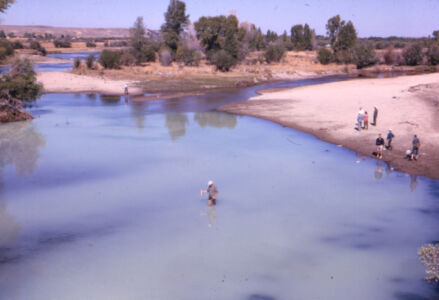
Courtesy of Jerry Smith, University of Michigan Museum of Zoology
Courtesy of Jerry Smith, University of Michigan Museum of Zoology
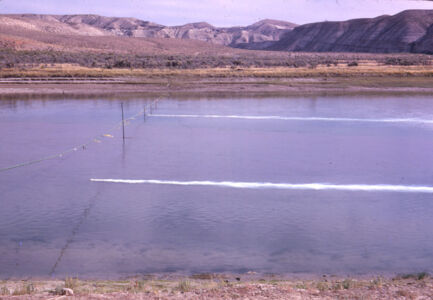
Courtesy of Jerry Smith, University of Michigan Museum of Zoology
Courtesy of Jerry Smith, University of Michigan Museum of Zoology

Putting an airboat into the Green River to inspect the ongoing rotenone operation.Photo by Rex Gary Schmidt. Courtesy of National Conservation Training Center. #4436
Putting an airboat into the Green River to inspect the ongoing rotenone operation.Photo by Rex Gary Schmidt. Courtesy of National Conservation Training Center. #4436
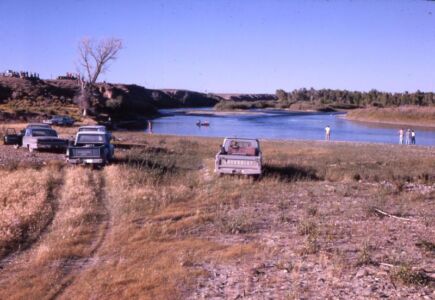
Green River near Big Piney.Courtesy of Jerry Smith, University of Michigan Museum of Zoology.
Green River near Big Piney.Courtesy of Jerry Smith, University of Michigan Museum of Zoology.
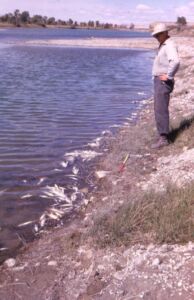
Poisoned fish near Big Sandy, Wyoming.Courtesy of Jerry Smith, University of Michigan Museum of Zoology.
Poisoned fish near Big Sandy, Wyoming.Courtesy of Jerry Smith, University of Michigan Museum of Zoology.
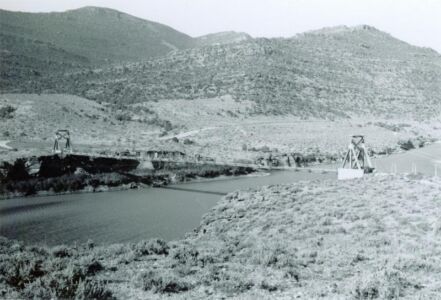
The Bridge in Browns Park where the detoxification took place.W.H. Kittams, National Park Service
The Bridge in Browns Park where the detoxification took place.W.H. Kittams, National Park Service
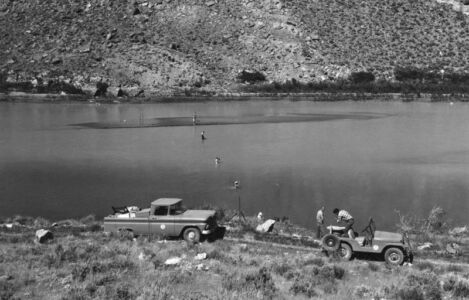
Setting up a rotenone drip station on the Green River in 1962.Photo by Rex Gary Schmidt. Courtesy of National Conservation Training Center. #4489
Setting up a rotenone drip station on the Green River in 1962.Photo by Rex Gary Schmidt. Courtesy of National Conservation Training Center. #4489

Agency personnel set up a rotenone drip station on the Green River 25 miles north of the Utah State LinePhoto by Rex Gary Schmidt. Courtesy of National Conservation Training Center. #4435
Agency personnel set up a rotenone drip station on the Green River 25 miles north of the Utah State LinePhoto by Rex Gary Schmidt. Courtesy of National Conservation Training Center. #4435

Agency personnel set up the detoxification station on the bridge in Browns Park, Colorado. Spreaders like the one in the middle of the picture were used to put potassium permanganate into the Green River.Photo by Rex Gary Schmidt. Courtesy of National Conservation Training Center. #4434
Agency personnel set up the detoxification station on the bridge in Browns Park, Colorado. Spreaders like the one in the middle of the picture were used to put potassium permanganate into the Green River.Photo by Rex Gary Schmidt. Courtesy of National Conservation Training Center. #4434
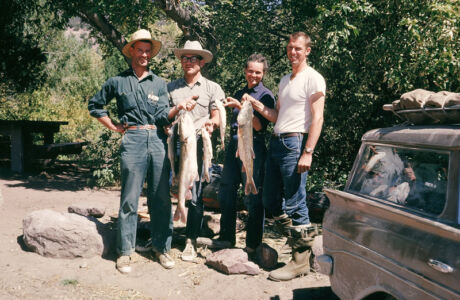
Robert R. Miller, Jerry Smith, Jane Davis, and Jack Davis hold up Colorado Pikeminnow killed during the Green River rotenone project in 1962 near Little Hole, Utah.Courtesy of Jerry Smith, University of Michigan Museum of Zoology.
Robert R. Miller, Jerry Smith, Jane Davis, and Jack Davis hold up Colorado Pikeminnow killed during the Green River rotenone project in 1962 near Little Hole, Utah.Courtesy of Jerry Smith, University of Michigan Museum of Zoology.
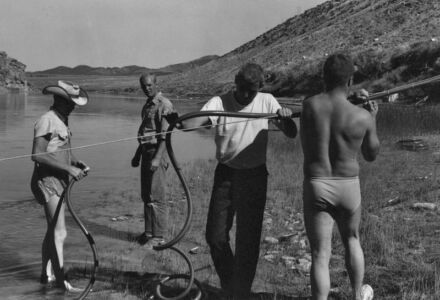
Rotenone drip lines like this were set up every ten miles along the Green River.Photo by Rex Gary Schmidt. Courtesy of National Conservation Training Center. #4437
Rotenone drip lines like this were set up every ten miles along the Green River.Photo by Rex Gary Schmidt. Courtesy of National Conservation Training Center. #4437
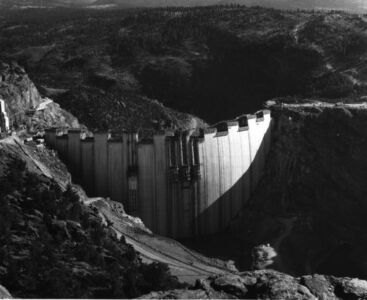
The Flaming Gorge Dam as it appeared in August, 1962.Photo by Rex Gary Schmidt. Courtesy of National Conservation Training Center. #4440
The Flaming Gorge Dam as it appeared in August, 1962.Photo by Rex Gary Schmidt. Courtesy of National Conservation Training Center. #4440
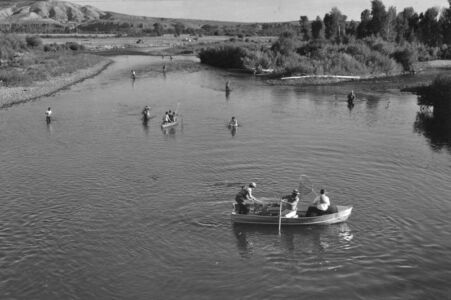
Citizens like those pictured here were invited to gather the fish that had been killed by the rotenone in the Green River. Agency officials assured them the fish were safe to eat.Photo by Rex Gary Schmidt. Courtesy of National Conservation Training Center. #4488
Citizens like those pictured here were invited to gather the fish that had been killed by the rotenone in the Green River. Agency officials assured them the fish were safe to eat.Photo by Rex Gary Schmidt. Courtesy of National Conservation Training Center. #4488
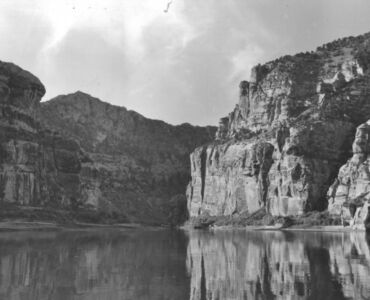
Flaming Gorge before the gates on the dam were closed.Photo by Rex Gary Schmidt. Courtesy of National Conservation Training Center. #4485
Flaming Gorge before the gates on the dam were closed.Photo by Rex Gary Schmidt. Courtesy of National Conservation Training Center. #4485
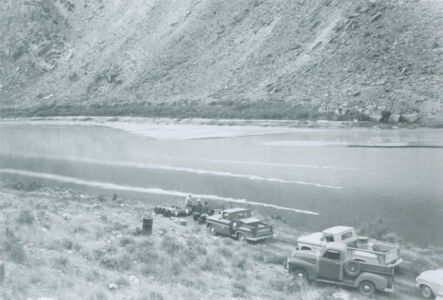
A drip station on the Green River.W.H. Kittams (National Park Service)
A drip station on the Green River.W.H. Kittams (National Park Service)
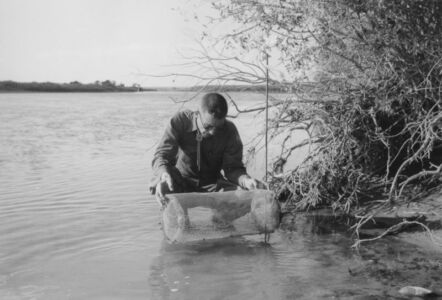
A biologist examines a sentinel cage in the Green River. Carp were placed in cages like these. They were one of the best means available to determine the toxicity of the water from rotenone during the Green River Rehabilitation.Photo by Rex Gary Schmidt. Courtesy of National Conservation Training Center. #4438
A biologist examines a sentinel cage in the Green River. Carp were placed in cages like these. They were one of the best means available to determine the toxicity of the water from rotenone during the Green River Rehabilitation.Photo by Rex Gary Schmidt. Courtesy of National Conservation Training Center. #4438
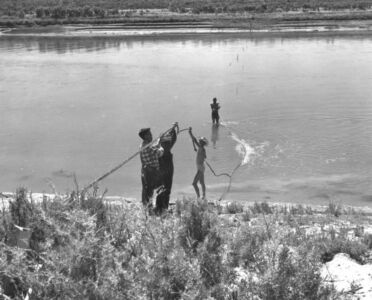
Setting up a rotenone drip station in the mouth of flaming gorge in 1962.Photo by Rex Gary Schmidt. Courtesy of National Conservation Training Center, FWS 4490
Setting up a rotenone drip station in the mouth of flaming gorge in 1962.Photo by Rex Gary Schmidt. Courtesy of National Conservation Training Center, FWS 4490
